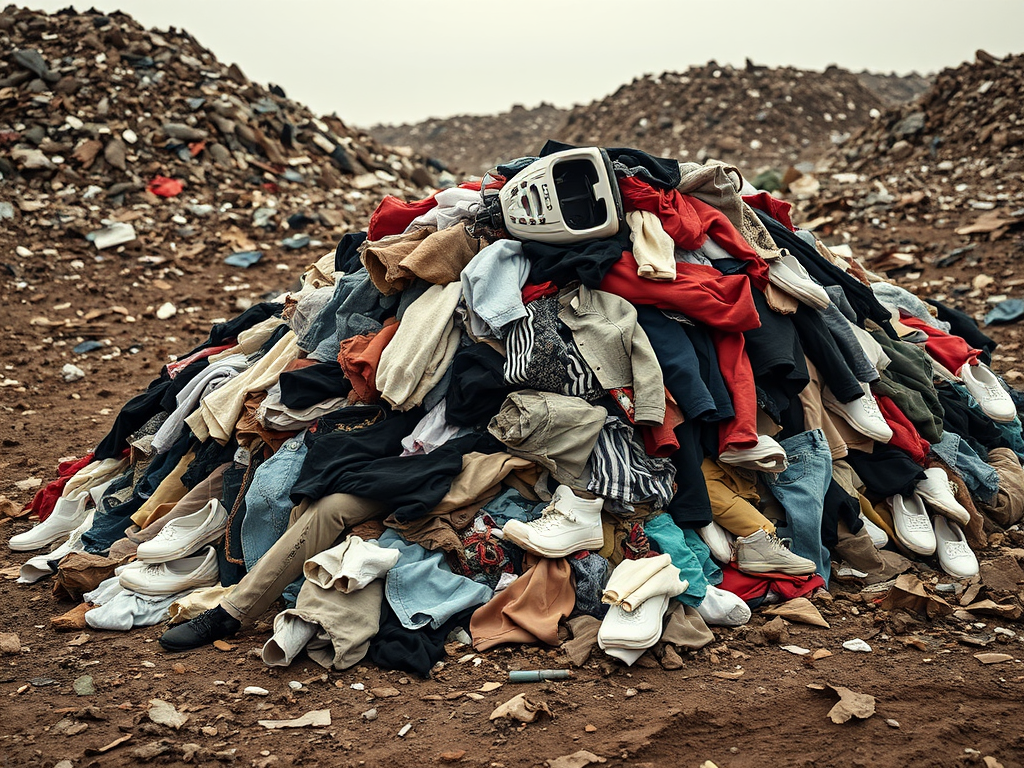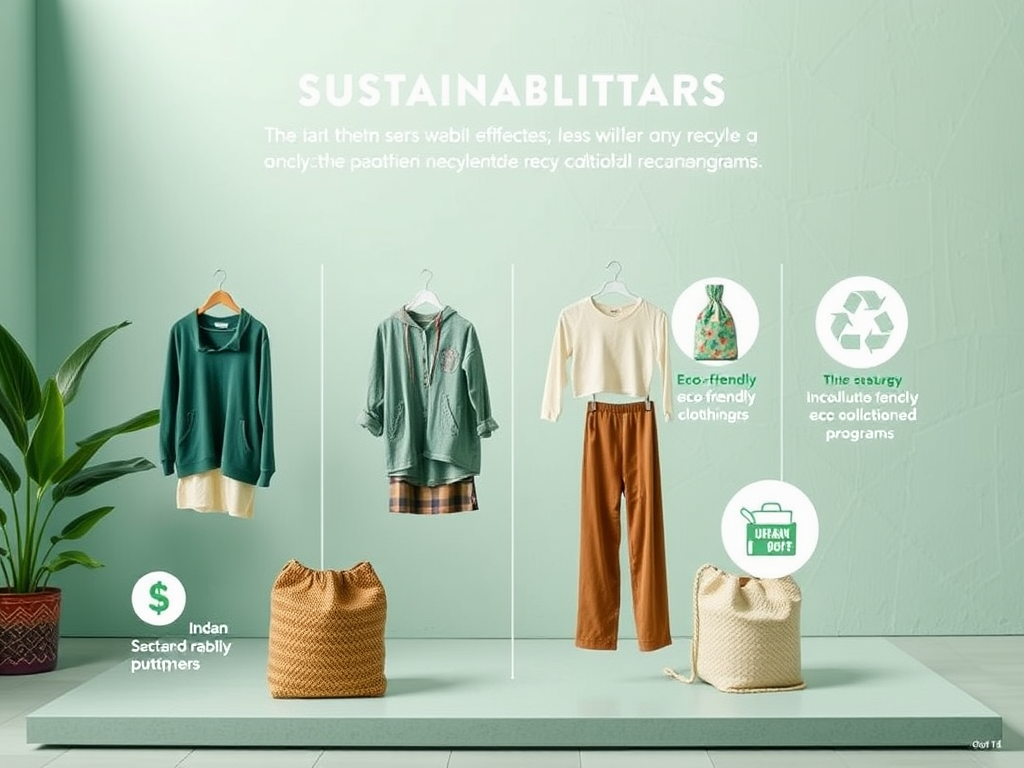Urban Outfitters has grown into a cultural phenomenon that intertwines youth fashion, eclectic home goods, and a unique lifestyle ethos. As one of the go-to destinations for modern, trendy styles, it raises a crucial question: is Urban Outfitters a fast fashion brand? This query is more than just a label; it unravels a complex narrative about consumer habits, environmental consequences, and the implications for a brand that thrives on perpetual trend cycles. As we delve deeper into the mechanics of Urban Outfitters from both a fashion and environmental lens, we’ll uncover the brand’s practices and their broader impact on society and the planet. Understanding these elements is pivotal for those wishing to make conscious choices in their shopping behaviors.
Fast fashion has been defined as a business model designed to quickly produce inexpensive clothing that mirrors the latest trends. The crux of this model lies in its ability to churn out new styles at a breakneck speed, often compromising quality and sustainability in the process. As we examine Urban Outfitters, it’s vital to grasp the defining characteristics of fast fashion brands generally, alongside the consequences these practices entail for our environment and society. The intention behind this examination is to clarify where Urban Outfitters fits in this complex puzzle.
Understanding Fast Fashion

Fast fashion brands typically share several key characteristics that set them apart from traditional fashion retailers. They embrace rapid design cycles, allowing them to quickly replicate high-fashion styles and present them at accessible price points. Additionally, these brands rely heavily on trends that are fleeting, which encourages consumers to constantly update their wardrobes with new pieces. This cycle fosters a disposability culture that results in significant waste. In many cases, garments are produced with lower-quality materials, leading to a shorter product lifespan.
- Rapid turnover of collections to keep up with trends
- Lower price points that appeal to a broad demographic
- Fewer considerations for ethical production processes
- High volume of waste generated from discarded clothing
- Reliance on marketing strategies that emphasize newness
| Fast Fashion Characteristics | Environmental Impact |
|---|---|
| High Production Rates | Increased resource depletion |
| Cheap Materials | Contributes to landfills and pollution |
| Poor Labor Conditions | Exploitation of workers |
| Massive Waste Generation | Negative contribution to global warming |
Urban Outfitters: A Brand Overview

Urban Outfitters emerged in 1970 with a single store in Philadelphia and has since transformed into a major player in the retail landscape, attracting a diverse audience predominantly comprised of millennials and Gen Z consumers. Known for its trendy apparel, vintage-inspired items, and a wide array of lifestyle products, Urban Outfitters has crafted a distinct niche. The brand’s pricing strategy often reflects its target market’s willingness to pay for style and uniqueness rather than longevity or ethical considerations. Its marketing approach emphasizes a lifestyle ethos that resonates with younger shoppers, leaning on social media and influencer partnerships to drive engagement.
Is Urban Outfitters Considered Fast Fashion?
To discern whether Urban Outfitters can be classified strictly as a fast fashion brand, we must analyze its business model in depth. The company engages in practices that align closely with traditional fast fashion retailers, such as frequent new drops and seasonal sales that capitalize on the latest trends. Furthermore, its pricing strategy tends to be lower than that of higher-end brands, appealing directly to budget-conscious young shoppers while encouraging a culture of frequent purchases.
It is also essential to consider the impact of Urban Outfitters’ marketing strategies on consumer behavior. The brand promotes a sense of urgency through limited-edition releases and targeted promotions, pushing consumers to buy more impulsively. This behavior is characteristic of the fast fashion sector and aligns Urban Outfitters closely with brands that are often criticized for their environmental and ethical implications.
Environmental Impact of Urban Outfitters’ Practices
The fashion industry as a whole has a staggering environmental footprint, contributing significantly to issues like climate change, pollution, and waste generation. Urban Outfitters, like many of its counterparts, produces significant waste through its manufacturing processes, which often incorporate synthetic materials that do not decompose. The brand’s resource consumption—considering the water used in production and the energy expended during shipping—further exacerbates these environmental challenges.
As Urban Outfitters aims to attract eco-conscious consumers, it’s vital to evaluate not just the brand’s shortcomings but also the strides it might be making toward more sustainable practices. However, despite attempts at promoting a greener image, the transition toward sustainability presents challenges that come from entrenched business models focused on rapid production.
In recent years, Urban Outfitters has recognized the growing demand for sustainability and has developed certain programs aimed at reducing its environmental footprint. However, these initiatives cannot entirely offset the broader issues associated with fast fashion. Common challenges in this transition include scaling production processes that still meet the appetites of consumers for quicker and cheaper fashion while addressing the dire need for environmental responsibility. Below are some efforts made by the brand:
- Introduction of a small line of eco-friendly clothing
- Recycling programs for old clothing
- Use of sustainable packaging
Consumer Awareness and Responsibility
As a consumer, your choices hold significant power in shaping the retail landscape. Awareness of fast fashion dynamics equips shoppers to make deliberate decisions. The reality is that sustainable practices extend beyond brand initiatives; they also encompass individual actions. By shifting your purchasing habits, you can contribute positively to combating the negative impacts of fast fashion.
- Research brands before buying to ensure ethical practices.
- Consider thrift shopping or vintage stores as alternatives.
- Prioritize quality over quantity in clothing purchases.
Supporting sustainable brands helps send a message to the market about consumer priorities—and it’s a sentiment that brands cannot ignore. Such decisions not only impact the environment but also influence which practices become the norm across the industry. Your purchasing choices can foster a shift towards ethical garment production.
Conclusion
In conclusion, Urban Outfitters embodies many characteristics of fast fashion that warrant consideration in discussions about its business ethics and environmental impact. While it does engage in some sustainable practices, its overarching model reflects a commitment to rapid production cycles that contribute to environmental degradation. As consumers, understanding the intricacies of fast fashion and the brands we support can guide us towards more responsible and informed choices.
Frequently Asked Questions
- Is Urban Outfitters a fast fashion brand? Yes, Urban Outfitters exhibits characteristics typical of fast fashion brands, including rapid trend turnover and lower pricing.
- What impact does Urban Outfitters have on the environment? Urban Outfitters contributes to environmental concerns through resource depletion, waste generation, and carbon emissions associated with fast fashion production.
- Does Urban Outfitters engage in any sustainable practices? While Urban Outfitters has implemented some sustainability initiatives, challenges remain in aligning with industry standards for environmental responsibility.
- How can consumers support sustainable fashion? Consumers can support sustainable fashion by choosing to shop from brands committed to ethical practices, purchasing second-hand clothing, and prioritizing quality over quantity.
